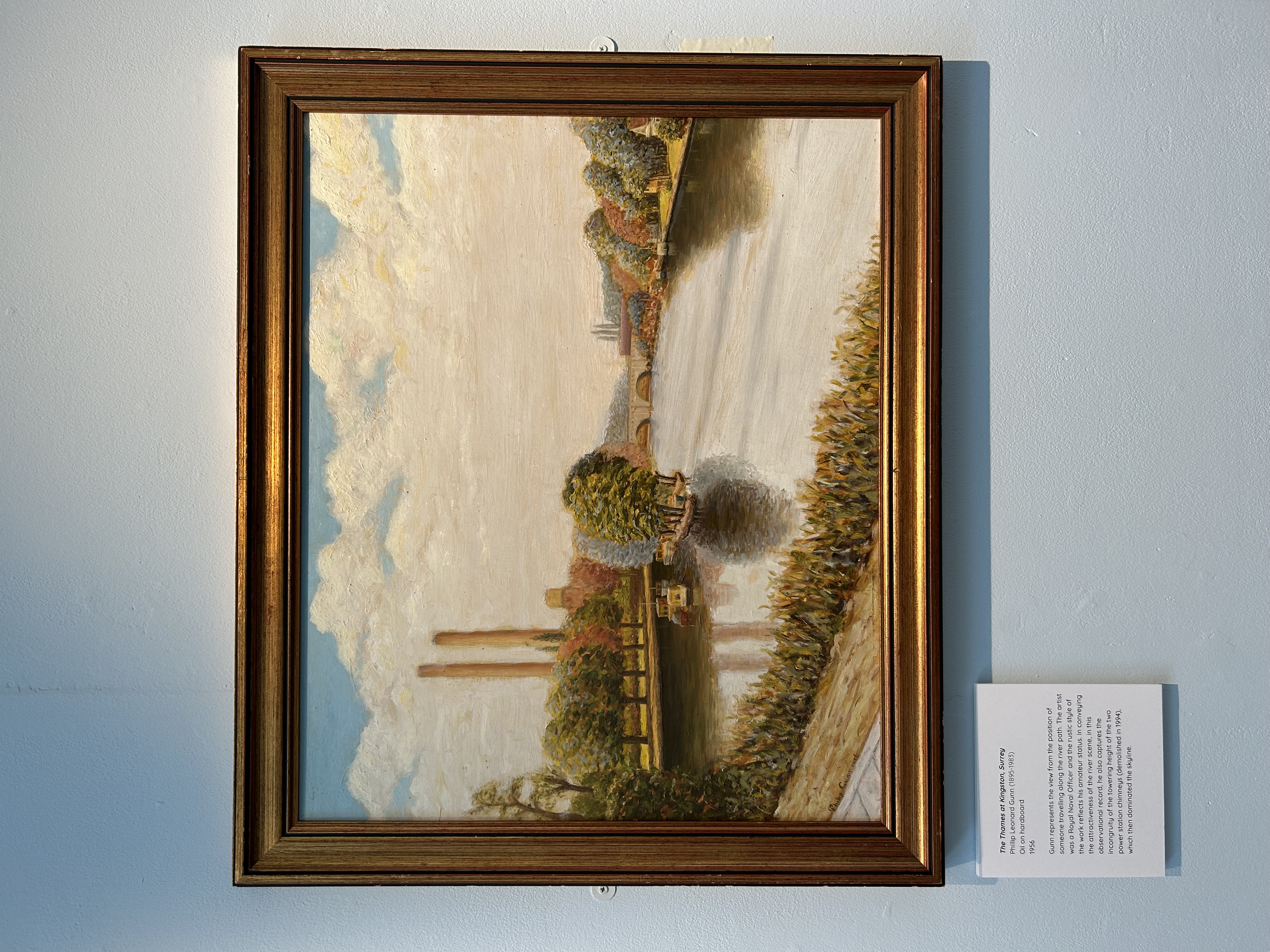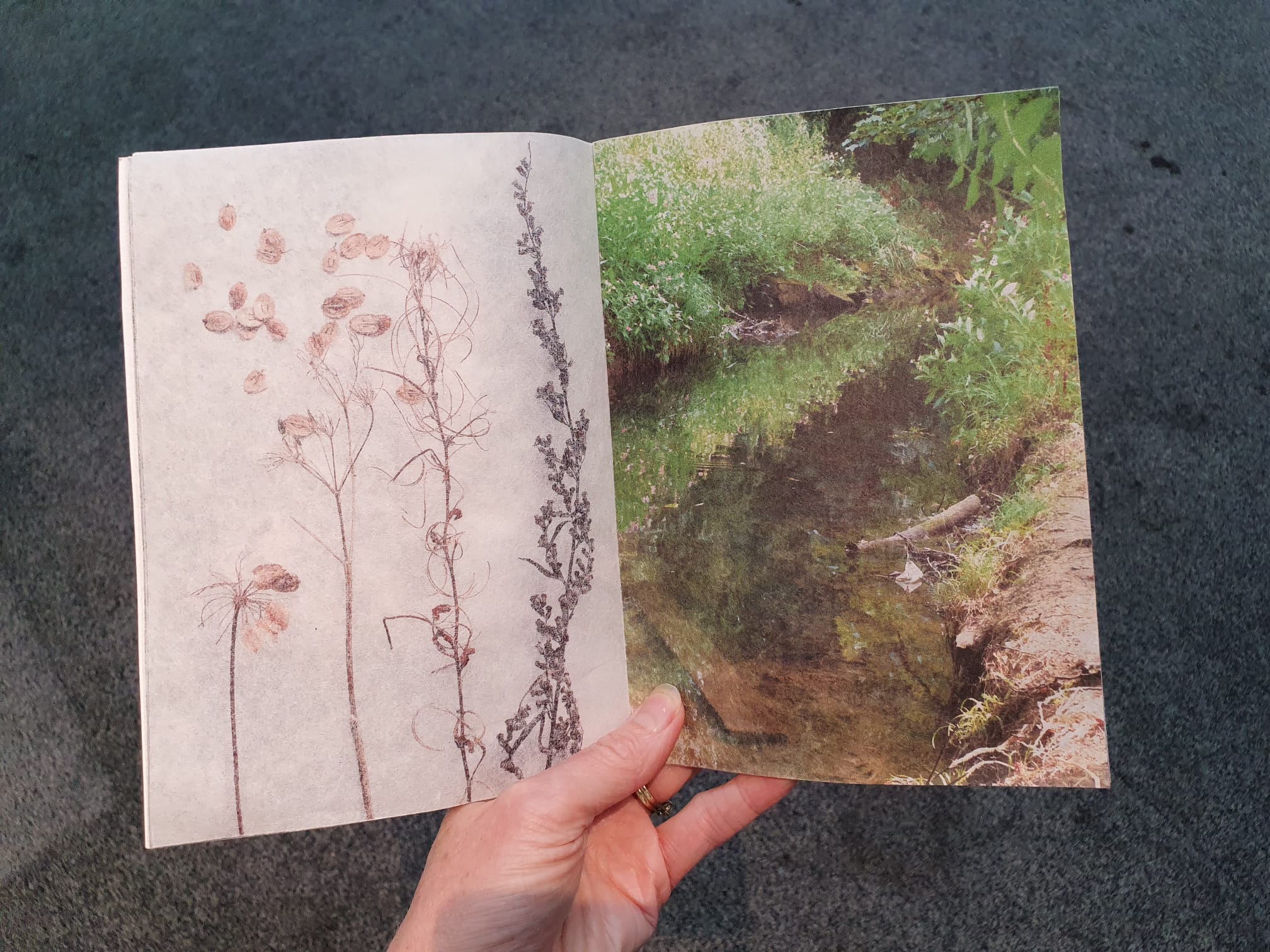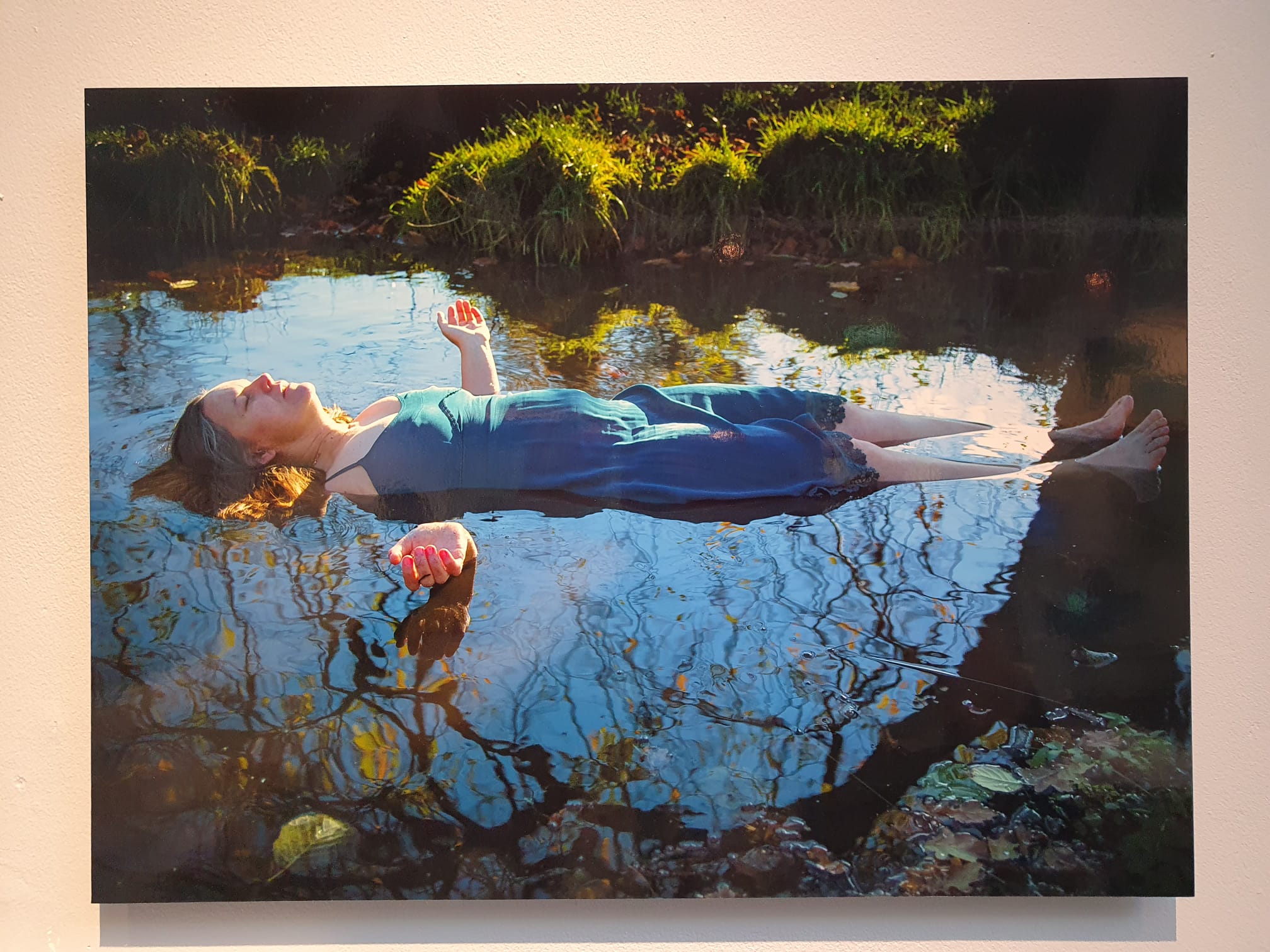Ruth Brimacombe, Curator:
The title of the exhibition ‘Creative Flow’ is a play on words that invites the visitor to revel in the beauty and visual appeal of the river, as represented by artists and photographers working in the borough, while also enjoying the state of creativity it inspires.
Offering a rare opportunity to see key art works from the museum’s permanent collection, the exhibition has also created the chance for us to discover and share some of the exciting river-inspired work by contemporary artists and photographers living in Kingston.

The Thames at Kingston, Surrey - Phillip Leonard Gunn (1895-1983)
Two little drawings in the Yale Center for British Art were the first spark for the exhibition - one of the mills on the Hogsmill drawn between 1650-80 and then a lovely image by John Nixon - of an eighteenth century family having a fun in Mr Barnard’s boat. This started me thinking about how the river has been a source of creative inspiration for centuries - and the different kinds of art that have resulted from this fascination. And then when I started digging I discovered that we hold a multitude of images of the river and Kingston’s bridges - in the museum’s permanent collection, painted, photographed, sketched and etched from every vista and approach. I knew about the Millais connection, but then I quickly came across Turner’s painting of Harvest Dinner, Kingston Bank. But what was really exciting was when - something that began as quite a traditional art historical idea, then took on a life of its own and became a living reality - as it became apparent that artists in Kingston are still genuinely inspired by the river.
From that point on, this exhibition has come together very naturally. I’d like to thank the artists Alexander Beer, Lyndsay Russell, Cecilia Liu, Louise Anderson, Jane Cradock-Watson and Thomas Pausz for allowing us to include their works - for bringing their ideas and energy to the show - and for enabling us to chart the story from the historic legacy right up to the present - all the way from the simple pen and ink drawing up to the digital present.
The exhibition also provides an opportunity to celebrate some of the local stories that derive from these art historical moments - and so for instance the section on the Hogsmill celebrates the research of Barbara Webb, who painstakingly identified the spot on the river where Millais painted his Ophelia - but also local initiatives, such as Elliot Newton’s (the council’s bio-diversity officer) conservation of the water voles on the Hogsmill (the animal that Millais originally included in the composition and then removed from the work when his friends pointed out it could be mistaken for a rat - not quite the look he was going for).

Looking for Ophelia, A Journey Along the Hogsmill River 2016 - Six Acre Meadow

Idylls of Self I - Louise Anderson - 2016
Hopefully visitors will leave feeling rested and replenished by their encounter with the river.
